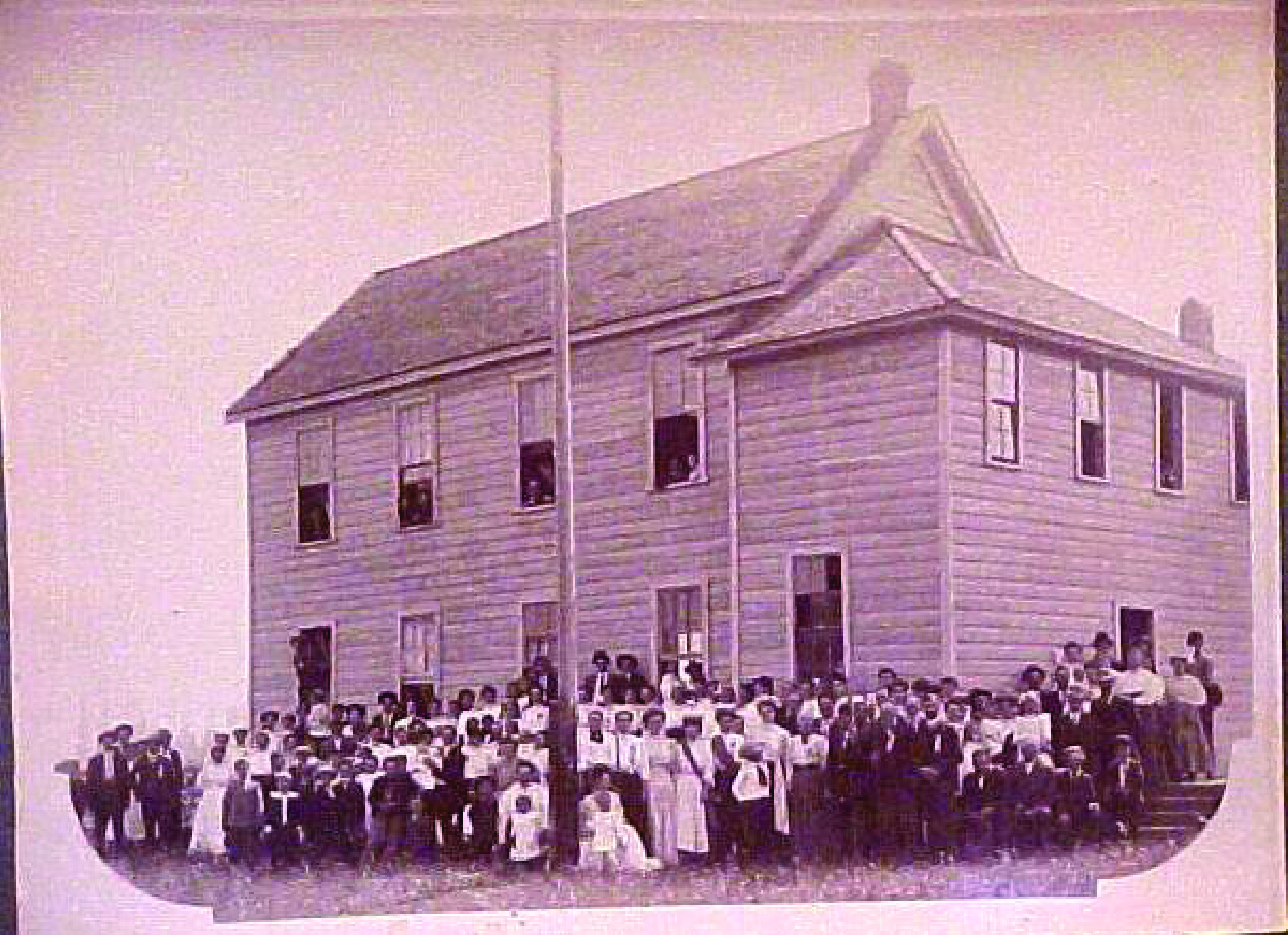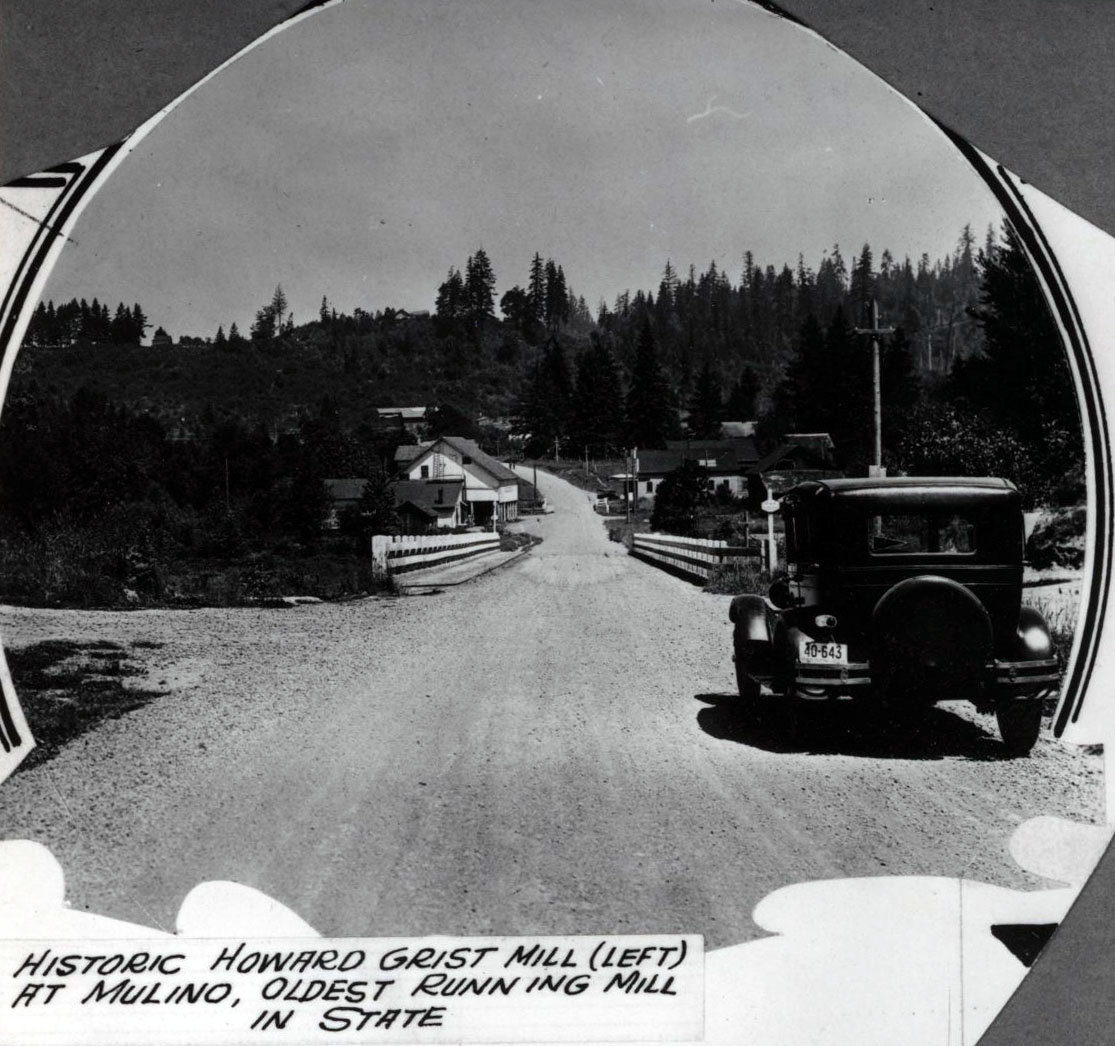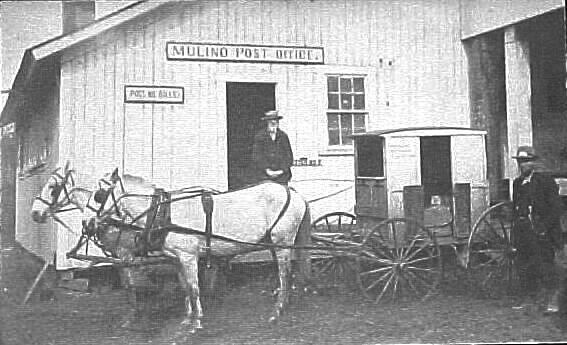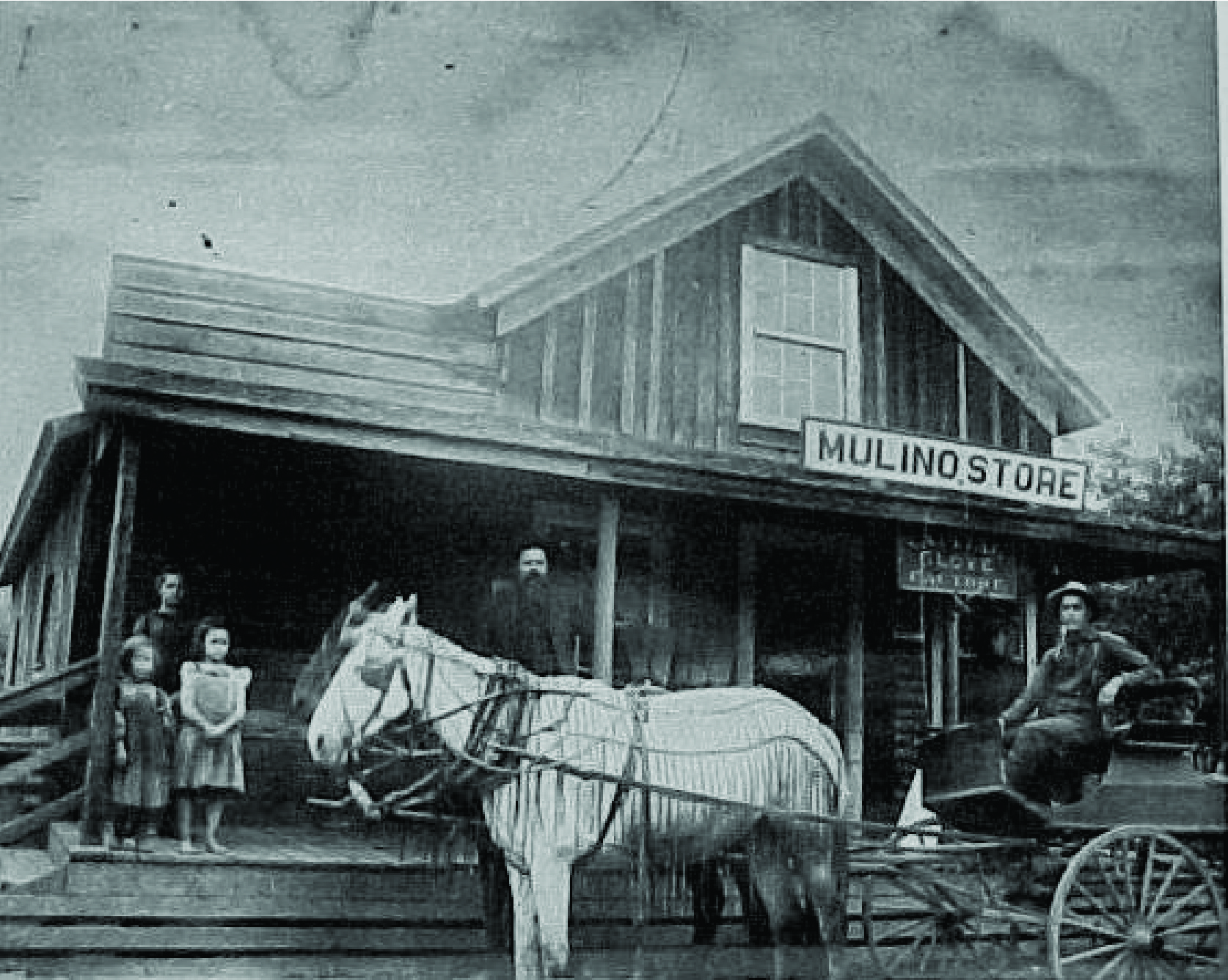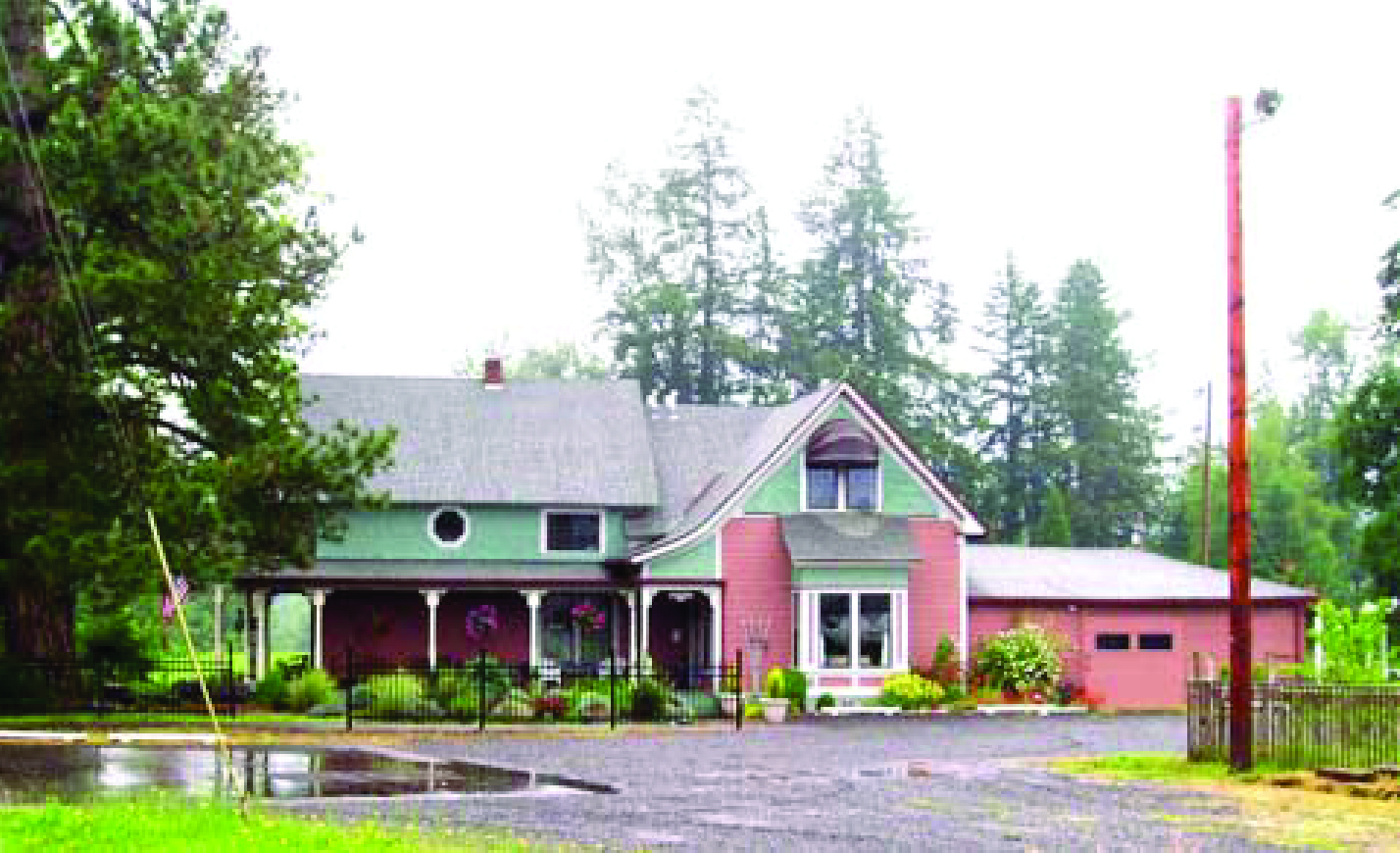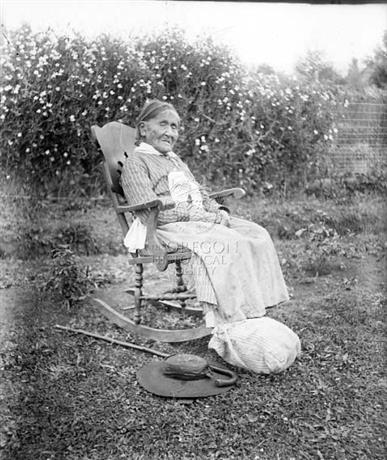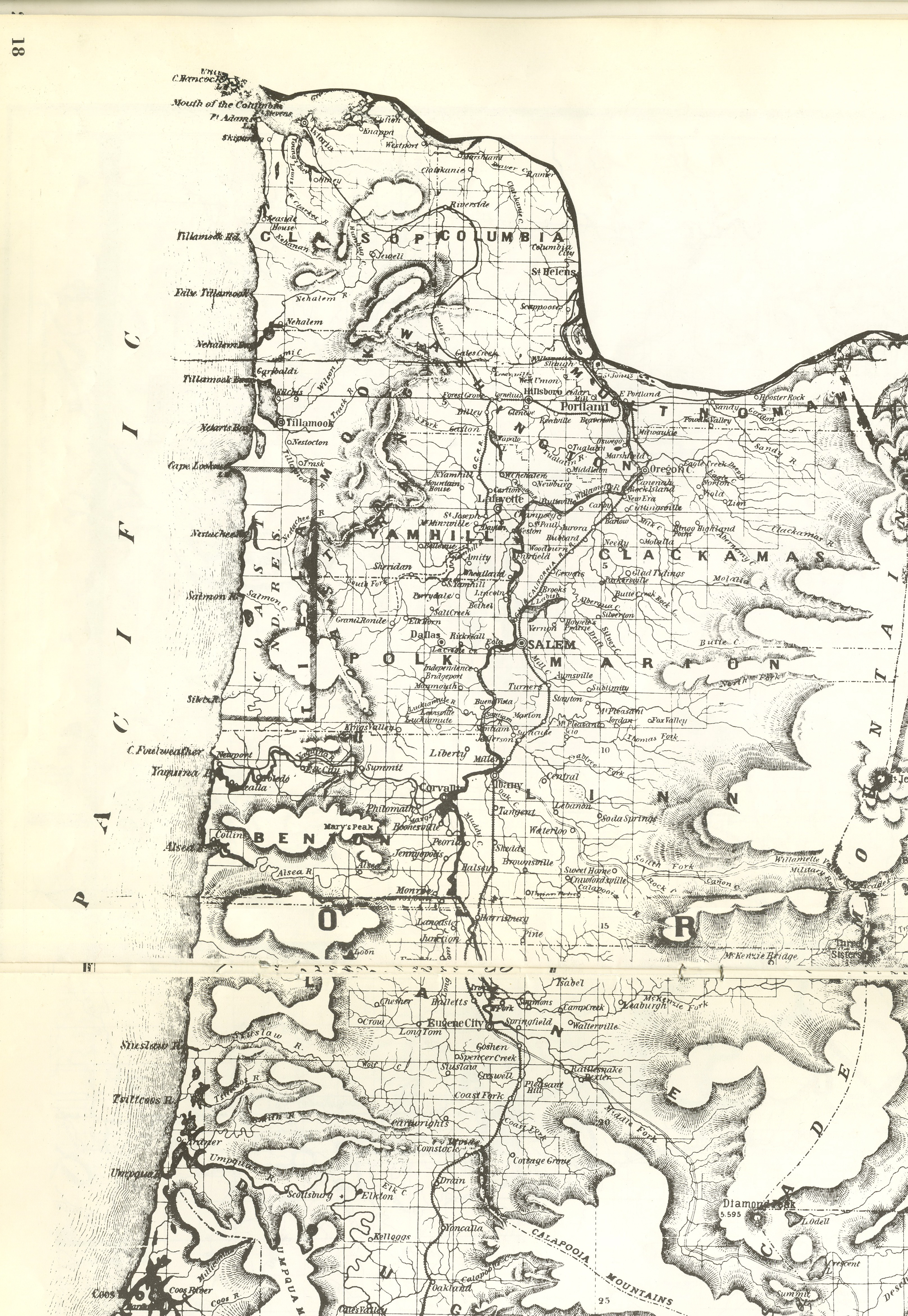Mulino is a hamlet of about two thousand people that began as a family enterprise and grew into a thriving community. Located in the Willamette Valley about fifteen miles south of Oregon City, Mulino was established by emigrants who had traveled west on the Oregon Trail. The original flour mill (also called a gristmill), built in 1851, may be the oldest continuously used industrial structure still standing in Oregon.
Before resettlement, the area around Mulino had been occupied by the Molala and Kalapuya peoples, who called the creek Nazzic Cu-Nazzic (Squawking Duck Creek). Introduced disease, particularly malaria and smallpox, reduced the Native population, and most of those who remained were removed to the Grand Ronde Reservation in 1856.
Most Oregon Trail emigrants who arrived in Oregon City in the 1840s set off to the south, into the fertile Willamette Valley. They traveled along a road (now Highway 213) that crossed Milk Creek, and it was there in 1845 that Richard Howard arrived from Ohio with his wife and children. Having worked as a miller, Howard saw the potential for a mill at the crossing. By 1851, he had claimed 640 acres of land under the Donation Land Act, where he built a home, a gristmill, a sawmill, and a storage barn. Both the storage barn and the gristmill, which is listed on the National Register of Historic Places, still stand. Other immigrants began to settle near the community, then known as Howards Mill.
A dam was built on Milk Creek and a sluiceway was constructed to power the mills. The waterwheel for the gristmill was powered perpendicularly; that is, the wheel lay on its side with the water running past one side, turning the wheel horizontally. The grinding stones, ordered from New York City, sent by ship around South America’s Cape Horn, took a year to reach Howards Mill.
In 1882, Charles Howard, Richard’s son, decided to open a post office. He wanted to name it Molino, which means mill in Spanish, but postal authorities would not permit it, ostensibly because the name was too similar to Molalla, a town about six miles to the south. Apparently the name Mulino was satisfactory, however, and the post office was established at the south end of town.
In 1885, Mr. Carlisle, a Confederate soldier, built a house by the road just south of Milk Creek. Twenty years later, John and Annie Force purchased the house and remodeled it in a Victorian style. By the early twentieth century, the town of Mulino had a store, a grange hall, and a gas station, said to be the only place to buy gas between Oregon City and Silverton, about thirty miles to the south. It also has restaurants, schools, and an airport for small planes. In May 2007, the county named Mulino a hamlet, only the third such designation in the state.
-
![]()
Mulino Grange, built in 1876..
Courtesy Roger Engle
-
![]()
Mulino, 1928; Howard Grist Mill on left..
Courtesy Oregon Hist. Soc. Research Lib., 005408
-
![]()
Mulino Post Office.
Courtesy Roger Engle
-
![]()
Mulino Flour Mill; extension held post office, 1920.
Courtesy Oregon Hist. Soc. Research Lib., Lot311392
-
![]()
Mulino Store.
Courtesy Roger Engle
-
![]()
Mulino school.
Courtesy Oregon Hist. Soc. Research Lib., 67404
-
![]()
Mulino School, built in 1921..
Courtesy Roger Engle
-
![]()
Mulino house, 2005.
Courtesy Oregon State Museum of Anthropology
-
![The Port of Portland bought the airport in 1985; the Oregon Department of Aviation took it over in 2009.]()
Mulino residents protest the acquisition of the local airport by the Port of Portland, c. 1980.
The Port of Portland bought the airport in 1985; the Oregon Department of Aviation took it over in 2009. Courtesy Oregon Hist. Soc. Research Lib., photo file 787
Related Entries
-
![Kalapuyan peoples]()
Kalapuyan peoples
The name Kalapuya (kǎlə poo´ yu), also appearing in the modern geograph…
-
![Molalla Peoples]()
Molalla Peoples
The name Molalla ([moˈlɑlə, ˈmolɑlə], usually spelled Molala by anthrop…
-
![Willamette Valley]()
Willamette Valley
The Willamette Valley, bounded on the west by the Coast Range and on th…
Related Historical Records
Map This on the Oregon History WayFinder
The Oregon History Wayfinder is an interactive map that identifies significant places, people, and events in Oregon history.
Further Reading
McArthur, Lewis A., and Lewis L. McArthur. 2003. Oregon Geographic Names. 6th edition. Portland: Oregon Historical Society.
McCormick, Gail J. Our Proud Past. Vol. 1. Mulino, Ore.: Gail J. McCormick Publishing Co., 1993
Nesmith, James W. “Diary of the Emigration of 1843.” Oregon Historical Society Quarterly (December 1906).
Zenk, Henry B., and Bruce Rigsby. “Molala.” In Handbook of North American Indians, Volume 12, edited by Deward E. Walker, Jr., 439–445. Washington, D.C.: Smithsonian Institution, 1998.

